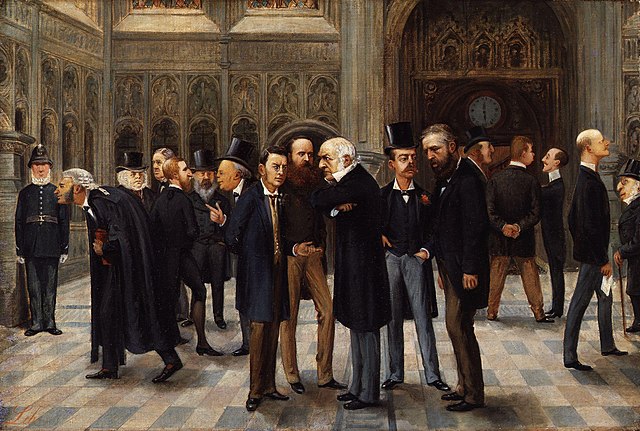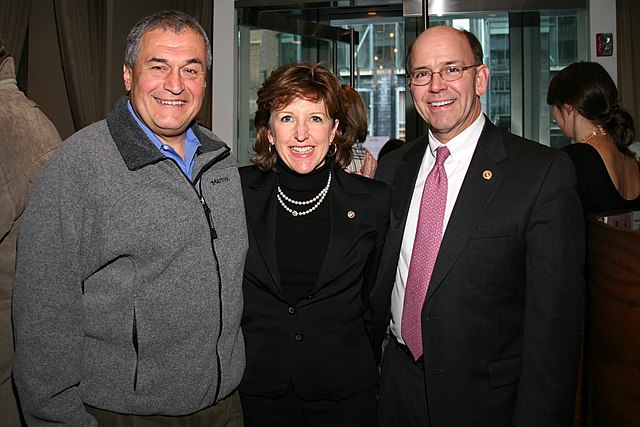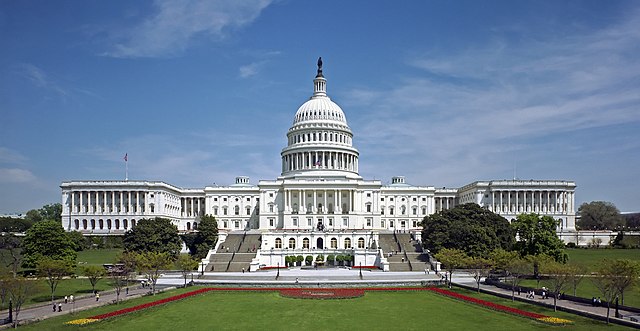Lobbying in the United States
Lobbying in the United States describes paid activity in which special interest groups hire well-connected professional advocates, often lawyers, to argue for specific legislation in decision-making bodies such as the United States Congress. It is often perceived negatively by journalists and the American public; critics consider it to be a form of bribery, influence peddling, and/or extortion. Lobbying is subject to complex rules which, if not followed, can lead to penalties including jail. Lobbying has been interpreted by court rulings as free speech protected by the First Amendment to the U.S. Constitution. Since the 1970s, the numbers of lobbyists and the size of lobbying budgets has grown and become the focus of criticism of American governance.
K Street in Washington, D.C., has become a metonym for the American lobbying industry.
The lobby of the House of Commons. Painting 1886 by Liborio Prosperi.
Lobbying depends on cultivating personal relationships over many years. Photo: Lobbyist Tony Podesta (left) with former Senator Kay Hagan (center) and her husband.
The Federalist Papers, in which Framers Madison, Hamilton and Jay strove to sway public opinion, could be considered according to current usage as an outside lobbying effort.
The United States Congress is the legislature of the federal government of the United States. It is bicameral, composed of a lower body, the House of Representatives, and an upper body, the Senate. It meets in the U.S. Capitol in Washington, D.C. Senators and representatives are chosen through direct election, though vacancies in the Senate may be filled by a governor's appointment. Congress has 535 voting members: 100 senators and 435 representatives. The U.S. vice president has a vote in the Senate only when senators are evenly divided. The House of Representatives has six non-voting members.
United States Congress
In 1868, this committee of representatives prosecuted President Andrew Johnson in his impeachment trial, but the Senate did not convict him.
The 1940 painting Scene at the Signing of the Constitution of the United States, depicting George Washington presiding over the signing of the United States Constitution
United States Congress c. 1915








